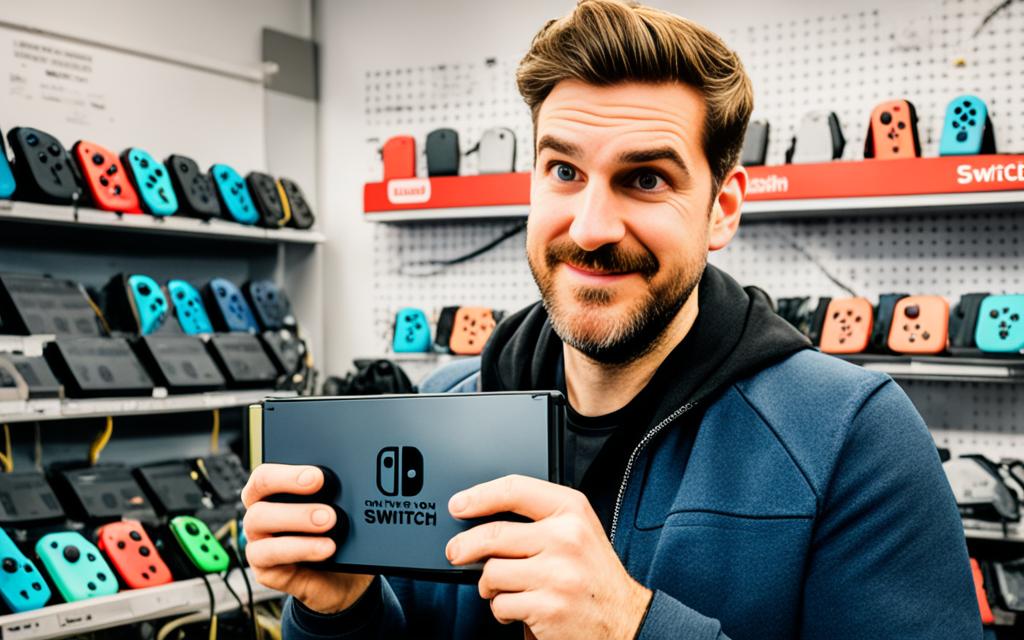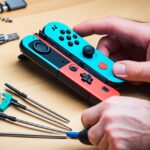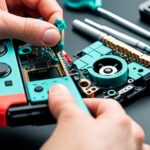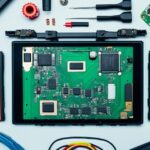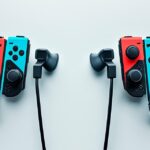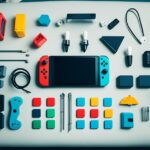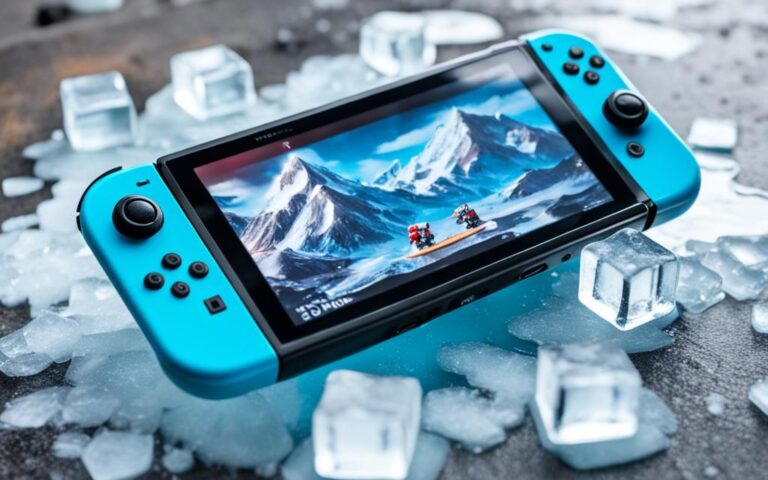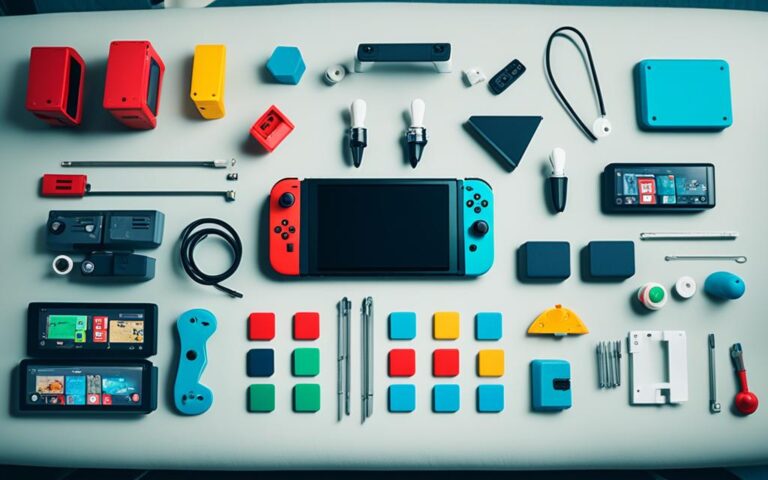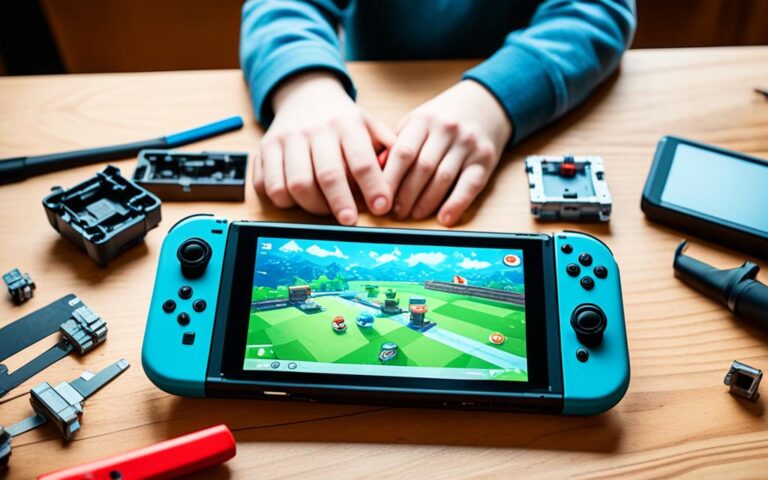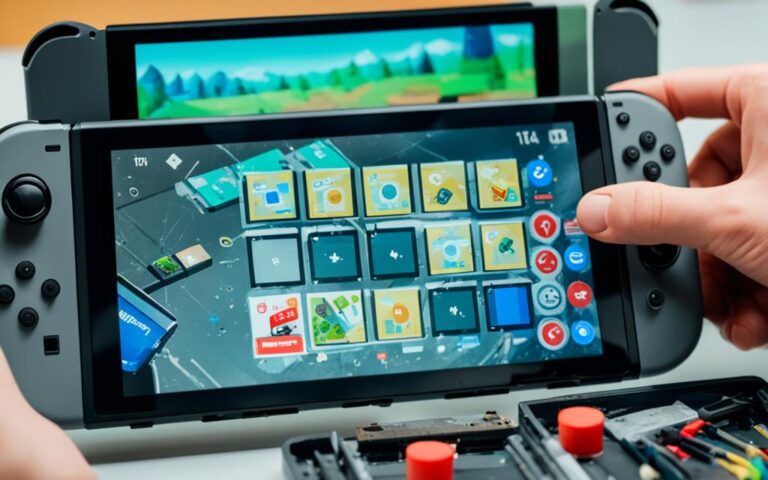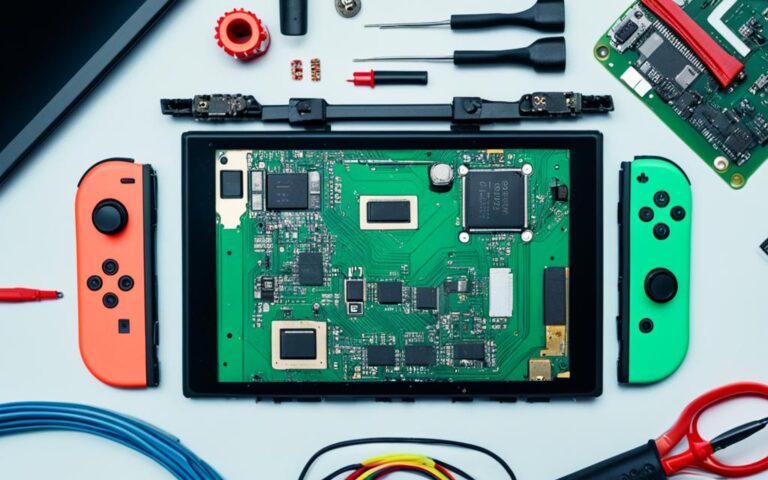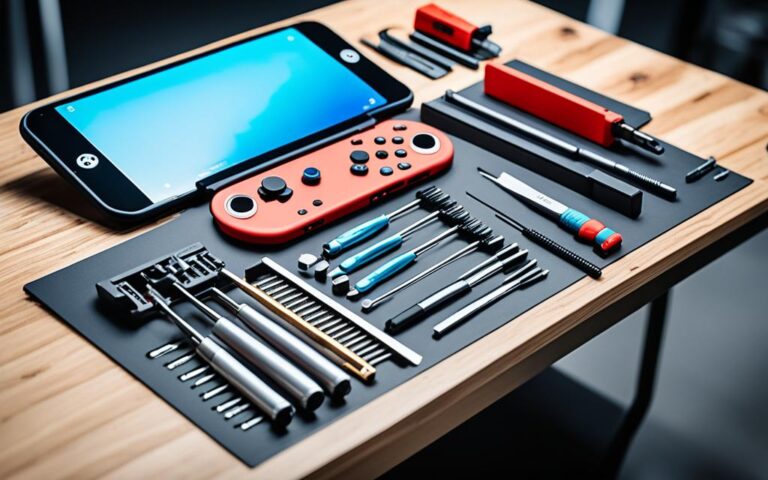The Most Common Nintendo Switch Issues and How to Solve Them
The Nintendo Switch is a popular gaming console, but like any tech device, it can experience glitches and problems. In this article, we will explore the most common issues that Nintendo Switch owners may encounter and provide expert solutions to resolve these problems.
From battery drain to storage limitations, Joy-Con problems, and screen issues, the Nintendo Switch can present various challenges for its users. Whether you’re facing issues with battery performance, storage space, Joy-Con drift, or screen scratches, rest assured that there are solutions available to help you overcome these obstacles and continue enjoying your gaming experience.
If you’re struggling with a draining battery that doesn’t last as long as it should, we’ll guide you through troubleshooting steps to identify the cause and offer tips to extend your battery life. Likewise, if you’re running out of storage space for your favorite games, we’ll provide recommendations on how to expand your storage capacity using microSD cards.
Furthermore, if you’re experiencing problems with your Joy-Con controllers, such as drift or connectivity issues, we’ll walk you through troubleshooting methods and inform you about potential repair options. Additionally, we’ll discuss how to address screen issues such as scratches or dead pixels, including preventive measures and repair solutions.
With our expert solutions and helpful advice, you’ll be able to solve common Nintendo Switch problems and enhance your gaming experience. Stay tuned for our next sections, where we’ll dive deeper into each specific issue and provide step-by-step instructions on how to troubleshoot and resolve them.
Battery Problems: Draining Faster Than Normal
One common problem with the Nintendo Switch is a draining battery that doesn’t last as long as it should. This can be caused by various factors, including:
- Bad charger or port: Using a faulty charger or port can result in slow charging speed or insufficient power supply, leading to faster battery drain.
- Outdated software: If your Nintendo Switch has outdated software, it may prevent a full charge and contribute to battery drainage. Updating the system software to the latest version can help resolve this issue.
- Hardware damage: Damage to the charging port or the battery itself can cause abnormal battery drain. It’s essential to inspect your Nintendo Switch for any visible signs of physical damage.
- Worn-out battery: Over time, the battery in your Nintendo Switch may become worn-out and lose its capacity to hold a charge. In such cases, replacing the battery can restore optimal battery life.
To diagnose and address the battery drain issue, follow these steps:
- Check if the charger and charging port are in good condition. If damaged, consider using a new charger or getting the port repaired.
- Update the software of your Nintendo Switch to the latest version. This can be done through the system settings.
- Inspect the charging port and battery for any signs of physical damage. If detected, contact Nintendo for professional repair.
- If your battery is no longer holding a charge, consider replacing it with a new one. Ensure you purchase a genuine battery compatible with your Nintendo Switch model.
Remember, taking care of your Nintendo Switch’s battery health is crucial to ensure optimal performance and prolonged battery life. By addressing the causes of battery drain, you can enjoy uninterrupted gaming sessions.
| Frequent Causes of Nintendo Switch Battery Drain | Solutions |
|---|---|
| Using a bad charger or port | Use a new charger or repair the port if damaged |
| Outdated software | Update the software to the latest version |
| Hardware damage to the charging port or battery | Contact Nintendo for professional repair |
| Worn-out battery | Replace the battery with a new one |
Storage Issues: Running Out of Space
Another common problem Nintendo Switch owners face is the limited storage capacity of the console. The standard Switch comes with 32GB of storage, but this can quickly fill up, especially when considering the space used by the console’s operating system. This can be particularly frustrating for gamers who want to have a large library of games at their fingertips without constantly having to delete and re-download them.
To overcome this storage limitation, it is highly recommended to purchase a microSD card for your Nintendo Switch. A microSD card acts as additional storage and allows you to store more games, screenshots, videos, and other data. With a microSD card, you can expand the storage capacity of your Switch and avoid running out of space.
Note: The Nintendo Switch supports microSD, microSDHC, and microSDXC cards with a capacity of up to 2TB.
By using a microSD card, you can enjoy a larger game library and have the flexibility to switch between games without worrying about limited storage space. Additionally, it allows you to save screenshots, game progress, and other data without the need for constant management or deletion.
When purchasing a microSD card for your Nintendo Switch, consider factors such as storage capacity, read and write speeds, and reliability. It is recommended to choose a reputable brand and ensure that the card is compatible with the Nintendo Switch gaming console.
Advantages of Using a microSD Card with Nintendo Switch
- Expanded storage capacity for more games and data
- Easier organization of game libraries
- Convenience in switching between games without the need for constant downloads
- Ability to store game screenshots, videos, and other media
Steps to Insert and Use a microSD Card
- Power off your Nintendo Switch console.
- Locate the microSD card slot on the back of the console.
- Insert the microSD card into the slot, ensuring proper alignment.
- Power on your Nintendo Switch console.
- To manage and transfer data to the microSD card, go to “System Settings” -> “Data Management” -> “Manage Software”. From here, you can archive or delete software to free up space on the console’s internal storage.
By following these steps and using a microSD card, you can overcome the storage limitations of the Nintendo Switch and enjoy the full potential of your gaming experience.
| Storage Capacity | Approximate Number of Games* |
|---|---|
| 64GB | 5-10 |
| 128GB | 10-20 |
| 256GB | 20-40 |
| 512GB | 40-80 |
| 1TB | 80-160 |
| 2TB | 160+ |
Note: The number of games listed is an estimate and may vary depending on game file sizes and other factors.
Joy-Con Problems: Drift and Connectivity
Many Nintendo Switch owners have experienced issues with their Joy-Con controllers. Two common problems that users encounter are Joy-Con drift and connectivity issues.
Joy-Con Drift
Joy-Con drift is a frustrating phenomenon where the controller registers movement even when no one is touching it. This can lead to in-game characters moving on their own or input commands being triggered unintentionally. Joy-Con drift can occur due to a variety of reasons, including dust or debris buildup within the joystick mechanism.
To troubleshoot Joy-Con drift:
- Start by recalibrating the controllers. This can be done in the settings menu of the Nintendo Switch console by navigating to “System Settings” and then “Controllers and Sensors.” Select “Calibrate Control Sticks” and follow the on-screen instructions.
- If recalibration doesn’t resolve the issue, try cleaning the joystick using compressed air. Gently spray the air around the base of the joystick to remove any debris that may be causing the drift.
- If the problem persists, you may need to contact Nintendo for repair. They have acknowledged the Joy-Con drift issue and offer free repairs for affected controllers, even if they’re out of warranty.
Note: It is worth mentioning that some users have reported that placing a small piece of paper or a DIY fix can temporarily alleviate Joy-Con drift. However, these methods are not recommended as they can potentially void the warranty and may not provide a permanent solution.
Joy-Con Connectivity Issues
Another common problem with the Joy-Con controllers is connectivity issues, where they disconnect from the Nintendo Switch console. This can interrupt gameplay and hinder the overall gaming experience.
To troubleshoot Joy-Con connectivity issues:
- Ensure that the Nintendo Switch console is not in a crowded or obstructed space. Allow for open space around the console to optimize signal reception.
- Make sure the controllers are within the recommended range of the console, generally around 10 feet.
- Remove any potential sources of interference, such as other wireless devices or objects that may block the signal.
- Restart the Nintendo Switch console and try reconnecting the Joy-Con controllers.
- If connectivity problems persist, there may be a hardware issue with either the console or the controllers. Contact Nintendo support for further assistance.
Resolving Joy-Con problems is crucial for an enjoyable gaming experience on the Nintendo Switch. By following the troubleshooting steps above, users can address both Joy-Con drift and connectivity issues. In case of persistent problems, reaching out to Nintendo support is recommended for professional assistance and repair.
| Joy-Con Problems | Troubleshooting Steps |
|---|---|
| Joy-Con Drift | 1. Recalibrate the controllers 2. Clean the joystick using compressed air 3. Contact Nintendo for repair |
| Joy-Con Connectivity Issues | 1. Ensure open space around the console 2. Stay within recommended range 3. Remove sources of interference 4. Restart the console 5. Contact Nintendo support if problems persist |
Screen Issues: Scratches and Dead Pixels
Screen issues can be a cause of concern for Nintendo Switch owners. Two common problems that users may encounter are scratches on the screen and dead pixels. Both of these issues can impact the overall gaming experience and require attention to restore the screen to its optimal condition.
Scratches on the Screen
Scratches on the Nintendo Switch screen can occur due to improper docking or handling of the device. To prevent these scratches and protect the screen, it is recommended to apply a screen protector. A screen protector acts as a barrier between the screen and external elements, reducing the risk of scratches and preserving the display quality.
If scratches have already appeared on the screen, seeking professional repair may be necessary. Professional technicians have the expertise to assess the extent of the damage and utilize suitable techniques to repair or replace the damaged screen.
It is worth mentioning that DIY methods, such as using toothpaste or abrasive materials, may cause further damage to the screen. Therefore, it is advisable to rely on professional assistance for screen repair and maintenance.
Dead Pixels
Dead pixels refer to individual pixels on the Nintendo Switch screen that fail to display the correct color or brightness. While Nintendo does not consider dead pixels a defect, they can be bothersome for users, especially when they are present out of the box or become widespread.
If dead pixels are significant and affect the gaming experience, contacting Nintendo for repair options is recommended. Nintendo’s customer support can provide guidance on available solutions to address the dead pixel issue.
| Screen Issues | Possible Causes | Solutions |
|---|---|---|
| Scratches | Improper handling or docking | – Apply a screen protector – Seek professional repair |
| Dead Pixels | Pixel malfunction | – Contact Nintendo for repair options |
Conclusion
In conclusion, the Nintendo Switch, while a popular gaming console, is prone to certain issues and glitches that may hinder the gaming experience. However, there are troubleshooting steps and expert solutions available to resolve these problems.
One common issue faced by Nintendo Switch owners is battery drain. This can be caused by factors such as using a faulty charger or outdated software. By ensuring the use of a reliable charger and updating the console’s software, users can extend the battery life and prevent unnecessary drainage.
Another issue is storage limitations. The standard Nintendo Switch comes with limited storage capacity, which can be quickly filled up by game installations and system data. To overcome this problem, purchasing a microSD card is recommended, as it provides additional storage space for games and other data.
Additionally, Joy-Con problems such as drift and connectivity issues can occur. Joy-Con drift refers to the controller registering movement even when not being touched, while connectivity issues occur when the Joy-Con controllers disconnect from the console. Users can attempt to recalibrate the Joy-Con or contact Nintendo for repair options to resolve these problems.
Lastly, screen issues like scratches and dead pixels can impact the visual experience. Proper handling, docking, and the use of screen protectors can prevent scratches. For dead pixels, users should consult Nintendo for repair options. By following these troubleshooting steps and utilizing the provided solutions, Nintendo Switch owners can overcome these common problems and enjoy uninterrupted gaming experiences.
